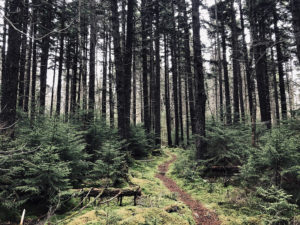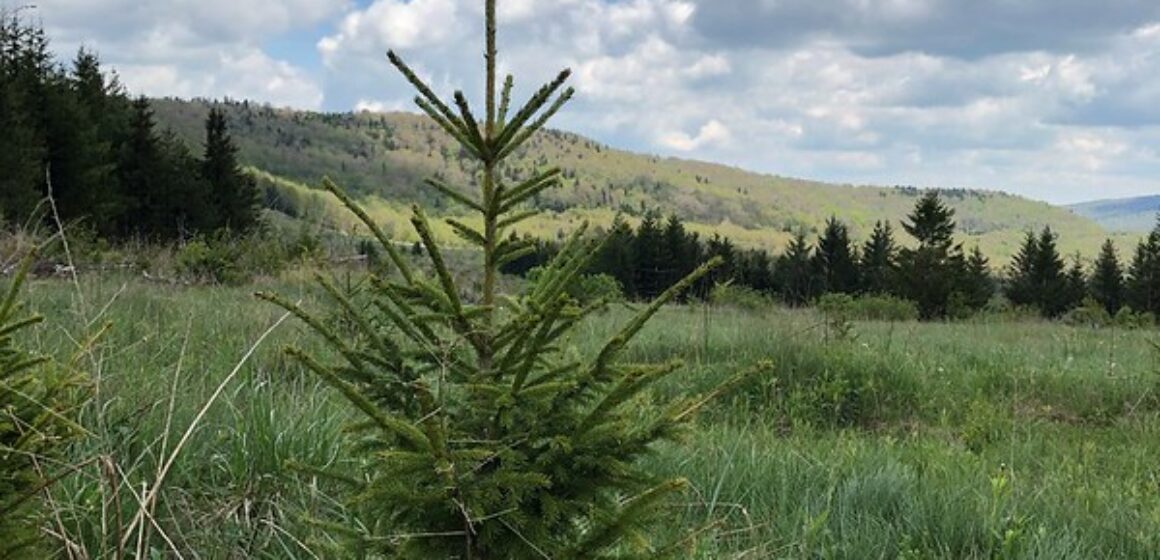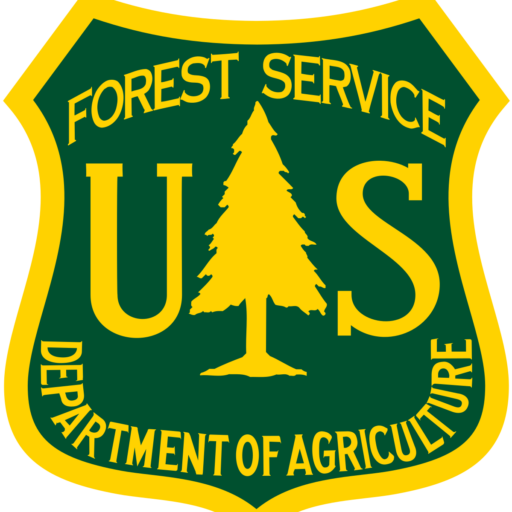Partners of the Central Appalachians Spruce Restoration Initiative Work Together for Forest Resilience in West Virginia
By Ellen White, Restoration AmeriCorps, United States Forest Service.
The Architect of the Capitol will choose the 2023 U.S. Capitol Christmas tree from Monongahela National Forest in West Virginia. We don’t know yet which tree will be chosen, but it could be one of the taller spruces that grow in the national forest, such as an introduced Norway spruce or the iconic native red spruce.

Visitors stepping into a red spruce forest on a hot, sunny day will notice a quick drop in temperature and a swift loss of light from the overstory. A hiker’s boots would be engulfed in squishy, wet moss, and they may notice the distinct, sappy smell of red spruce needles. High-elevation red spruce forests are some of the last remaining evidence of the ice age in the Central Appalachians. Dependent on cooler climates, red spruce trees are predicted to decline as the climate warms.
Helping red spruce forests adapt to climate change is critical because, while beautiful and unique, red spruce forests also provide numerous ecosystem functions like shading stream channels for native brook trout, cooling the soils, and creating a mossy understory that holds water like a sponge, and has been an integral part of West Virginia’s culture and history.
For over 20 years, non-profits and government partners, including Monongahela National Forest of the Central Appalachians Spruce Restoration Initiative (CASRI), have worked together to protect and restore these wild and wonderful forests, planting more than a million trees and releasing red spruce from the understory across thousands of acres. Now, partners are collaborating on new methods for climate adaptation to ensure that red spruce ecosystems will outlast the predicted warming temperatures and decrease precipitation of the future.
Since 2021, CASRI partners have planted over 100,000 climate-adapted red spruce trees across over 300+ acres of climate refugia. These climate-adapted trees are sourced from existing populations with greater genetic diversity (learn more at The Nature Conservancy). By creating connectivity between climate-adapted red spruce stands, we strengthen the future potential of our forests to better withstand the significant changes in climate. Survival of these red spruce trees also ensures the habitat survival of species that depend on high-elevation spruce forests and for visitors to ski in the winter and cool off in the summer.
Please join us in celebrating West Virginia’s contributions to the 2023 U.S. Capitol Christmas Tree Initiative by following along at www.uscapitolchristmastree.com. Be sure to visit and support CASRI, as well, while we work together for climate-resilient red spruce forests for future generations to enjoy.

